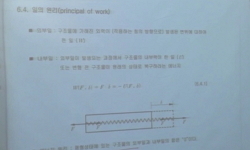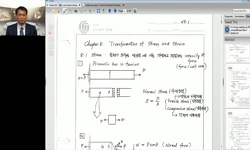The connecting part of bridge widening undertakes complicated forces and tends to crack. Basic magnesium sulfate cement concrete has excellent properties such as ideal early strength and tensile strength, meeting the performance requirements of joint ...
http://chineseinput.net/에서 pinyin(병음)방식으로 중국어를 변환할 수 있습니다.
변환된 중국어를 복사하여 사용하시면 됩니다.
- 中文 을 입력하시려면 zhongwen을 입력하시고 space를누르시면됩니다.
- 北京 을 입력하시려면 beijing을 입력하시고 space를 누르시면 됩니다.
https://www.riss.kr/link?id=A107919739
-
저자
Li-fang Zhang (Nanjing University of Aeronautics and Astronautics) ; Jun Yan (Nanjing University of Aeronautics and Astronautics) ; Hai-yan Ma (Nanjing University of Aeronautics and Astronautics) ; Hong-fa Yu (Nanjing University of Aeronautics and Astronautics) ; Ying Wang (Jiangsu Huatong Engineering Testing Co., Ltd.) ; Qi-quan Mei (Nanjing University of Aeronautics and Astronautics)
- 발행기관
- 학술지명
- 권호사항
-
발행연도
2021
-
작성언어
English
- 주제어
-
등재정보
KCI등재,SCIE,SCOPUS
-
자료형태
학술저널
-
수록면
4742-4750(9쪽)
-
KCI 피인용횟수
0
- DOI식별코드
- 제공처
-
0
상세조회 -
0
다운로드
부가정보
다국어 초록 (Multilingual Abstract)
The connecting part of bridge widening undertakes complicated forces and tends to crack. Basic magnesium sulfate cement concrete has excellent properties such as ideal early strength and tensile strength, meeting the performance requirements of joint materials. Experiments of two spliced box girder specimens with C40 basic magnesium sulfate cement concrete (MC) and normal Portland cement concrete (NC) as joint materials are carried out. Concrete strain, reinforcement strain, deflection and crack propagation law of the joint section are tested and analyzed under symmetrical loading at the cantilever of the box girders. The study shows when MC material is used in the splicing section, the joint section showed a multi-cracks failure mode with an ultimate load ratio of 0.99 and a maximum crack width of 1.3 mm; NC joint section has only three longitudinal cracks with an ultimate load ratio of 0.97 and a maximum crack width of 0.98 mm. Under the same load, the crack width and the deflection of mid-span MC joint section are greater than which of NC joint section. The maximum deflection of NC splicing section is 1.20 mm, which is 1/633 of the calculating span length. The maximum deflection of MC spliced section is 2.03 mm, which is 1/374 of the calculating span length. Comparison of the maximum deflection and the maximum crack width shows that MC material has better ductility.
참고문헌 (Reference)
1 Chai YH, "Waiting period for closure pours in bridge widening or staged construction" 21 (21): 04016006-, 2016
2 Zhu HW, "Uniaxial compressive stressstrain curves of the magnesium oxysulfate cement concrete" 232 : 1172-1186, 2019
3 Tu B, "Time-variant reliability of widened deteriorating prestressed concrete bridges considering shrinkage and creep" 153 : 1-16, 2017
4 Deng DH, "The mechanism he mechanism for soluble phosphates to improve the water resistance of magnesium oxychloride cement" 33 (33): 1311-1317, 2003
5 Wu CY, "The hydration mechanism and performance of modified magnesium oxysulfate cement by tartaric acid" 144 : 516-524, 2017
6 Chen WH, "The basic mechanical performance of magnesium sulfate cement concrete" 35 (35): 48-54, 2017
7 "Tensile test of metallic materials, Part 1:Greenhouse test method. GB/T 228.1-2010"
8 Gu B, "Temperature gradient and its effect on long-span prestressed concrete box girder bridge" 5956264-, 2020
9 Xiang SC, "Synthesis of pectiniform polyurethane-modified polycarboxylate and its preliminary application in ultrahigh performance concrete" 2020
10 Chen WH, "Study of alternating current impedance of basic magnesium sulfate cement" 896 : 97-103, 2017
1 Chai YH, "Waiting period for closure pours in bridge widening or staged construction" 21 (21): 04016006-, 2016
2 Zhu HW, "Uniaxial compressive stressstrain curves of the magnesium oxysulfate cement concrete" 232 : 1172-1186, 2019
3 Tu B, "Time-variant reliability of widened deteriorating prestressed concrete bridges considering shrinkage and creep" 153 : 1-16, 2017
4 Deng DH, "The mechanism he mechanism for soluble phosphates to improve the water resistance of magnesium oxychloride cement" 33 (33): 1311-1317, 2003
5 Wu CY, "The hydration mechanism and performance of modified magnesium oxysulfate cement by tartaric acid" 144 : 516-524, 2017
6 Chen WH, "The basic mechanical performance of magnesium sulfate cement concrete" 35 (35): 48-54, 2017
7 "Tensile test of metallic materials, Part 1:Greenhouse test method. GB/T 228.1-2010"
8 Gu B, "Temperature gradient and its effect on long-span prestressed concrete box girder bridge" 5956264-, 2020
9 Xiang SC, "Synthesis of pectiniform polyurethane-modified polycarboxylate and its preliminary application in ultrahigh performance concrete" 2020
10 Chen WH, "Study of alternating current impedance of basic magnesium sulfate cement" 896 : 97-103, 2017
11 "Standard for test methods of ordinary concrete mechanical properties. GB/T 50081-2002"
12 "Specifications for design of highway reinforced concrete and prestressed concrete bridges and culverts. JTG3362-2018"
13 Zhang Y, "Shear properties of the interface between ultra-high performance concrete and normal strength concrete" 248 : 118455-, 2020
14 Orta L, "Sensitivity analysis of restrained shrinkage stresses of concrete deck overlays" 210 : 110396-, 2020
15 Zuo YH, "Research the application of new materials in a bridge concatenation" Southeast University 2017
16 Gao ZB, "Research on application of GD elastic concrete in joint of new and old bridges" 4 : 82-85, 2017
17 Wu CY, "Preparation and properties of modified magnesium oxysulfate cement derived from waste sulfuric acid" 28 (28): 178-188, 2016
18 Xue XW, "Numerical analysis of dead load shear force distribution in webs of multicell inclined web boxgirder bridge" 9670704-, 2020
19 Yang SQ, "Mechanical property of the basic magnesium sulfate cement concrete" 35 (35): 2548-2555, 2016
20 Nie JG, "Mechanical behavior of composite joints for connecting existing concrete bridges and steel-concrete composite beams" 75 : 11-20, 2012
21 Wen QJ, "Long-term effect analysis of prestressed concrete boxgirder bridge widening" 25 : 1580-1586, 2011
22 Tan YS, "Hydration behavior of magnesium oxysulfate cement with fly ash via electrochemical impedance spectroscopy" 31 (31): 1-11, 2019
23 "Guide for widening highway bridges. ACI 345.2R13"
24 Weatherer PJ, "Field evaluation of staged concrete bridge deck pours adjacent to live traffic" 24 (24): 04019006-, 2019
25 Guo J, "Experimental study on the construction stages of an RC closure pour in bridge widening" 22 (22): 06017007-, 2017
26 Chen WH, "Experimental study on static load and fatigue behavior of reinforced concrete beam with basic magnesium sulfate cement" 36 (36): 2404-2409, 2017
27 Niwa J, "Experimental study on shear behavior of the interface between old and new deck slabs" 126 : 278-291, 2016
28 Zeng XC, "Experimental study on reinforced concrete large-eccentricity compressive column of basic magnesium sulfate cement concrete-in different curing conditions" 19 (19): 1608-1618, 2018
29 Heng K, "Experimental study on impact mechanical properties of basic magnesium sulfate cement concrete" 37 (37): 3854-3859, 2018
30 Zeng XC, "Experimental study on flexural behavior of reinforced basic magnesium sulfate cement concrete beams" 39 (39): 1933-1940, 2018
31 Zeng XC, "Experimental study on Shear failure of basic magnesium sulfate cement concrete beams" 39 (39): 1198-1205, 2018
32 Espeche AD, "Estimation of bond strength envelopes for old-to-new concrete interfaces based on a cylinder splitting test" 25 : 1222-1235, 2011
33 Wu CY, "Effects of phosphoric acid and phosphates on magnesium oxysulfate cement" 48 (48): 907-917, 2015
34 Wu CY, "Effectcs of material ratio, fly ash and citric acid on magnesium oxysulfate cement" 111 (111): 291-297, 2014
35 Hong SN, "Effect of vehicle-induced vibrations on earlyage concrete during bridge widening" 77 : 179-186, 2015
36 "Design code for concrete structures. GB 50010-2010"
37 Liang GZ, "Connection between widening beam body and original beam body of long-span continuous box girder" 24 (24): 65-69, 2005
38 Weatherer PJ, "Behavior of longitudinal joints in staged concrete bridge decks subject to displacements during curing" 24 (24): 04019067-, 2019
39 Xiangchao Zeng, "An Overview of Study on Basic Magnesium Sulfate Cement and Concrete in China (2012-2019)" 대한토목학회 23 (23): 4445-4453, 2019
동일학술지(권/호) 다른 논문
-
- 대한토목학회
- Caiwei Liu
- 2021
- KCI등재,SCIE,SCOPUS
-
- 대한토목학회
- Bing-qiang Zhang
- 2021
- KCI등재,SCIE,SCOPUS
-
- 대한토목학회
- Jin-Hong Yu
- 2021
- KCI등재,SCIE,SCOPUS
-
Seismic Response of Two Site Models and Their Effects on the Railway Cable-Stayed Bridge
- 대한토목학회
- Jin Zhang
- 2021
- KCI등재,SCIE,SCOPUS
분석정보
인용정보 인용지수 설명보기
학술지 이력
| 연월일 | 이력구분 | 이력상세 | 등재구분 |
|---|---|---|---|
| 2023 | 평가예정 | 해외DB학술지평가 신청대상 (해외등재 학술지 평가) | |
| 2020-01-01 | 평가 | 등재학술지 유지 (해외등재 학술지 평가) |  |
| 2010-01-01 | 평가 | 등재학술지 유지 (등재유지) |  |
| 2008-01-01 | 평가 | 등재학술지 유지 (등재유지) |  |
| 2005-05-27 | 학술지명변경 | 한글명 : 대한토목학회 영문논문집 -> KSCE Journal of Civil Engineering |  |
| 2005-01-01 | 평가 | 등재학술지 선정 (등재후보2차) |  |
| 2004-01-01 | 평가 | 등재후보 1차 PASS (등재후보1차) |  |
| 2002-01-01 | 평가 | 등재후보학술지 선정 (신규평가) |  |
학술지 인용정보
| 기준연도 | WOS-KCI 통합IF(2년) | KCIF(2년) | KCIF(3년) |
|---|---|---|---|
| 2016 | 0.59 | 0.12 | 0.49 |
| KCIF(4년) | KCIF(5년) | 중심성지수(3년) | 즉시성지수 |
| 0.42 | 0.39 | 0.286 | 0.06 |






 KCI
KCI






